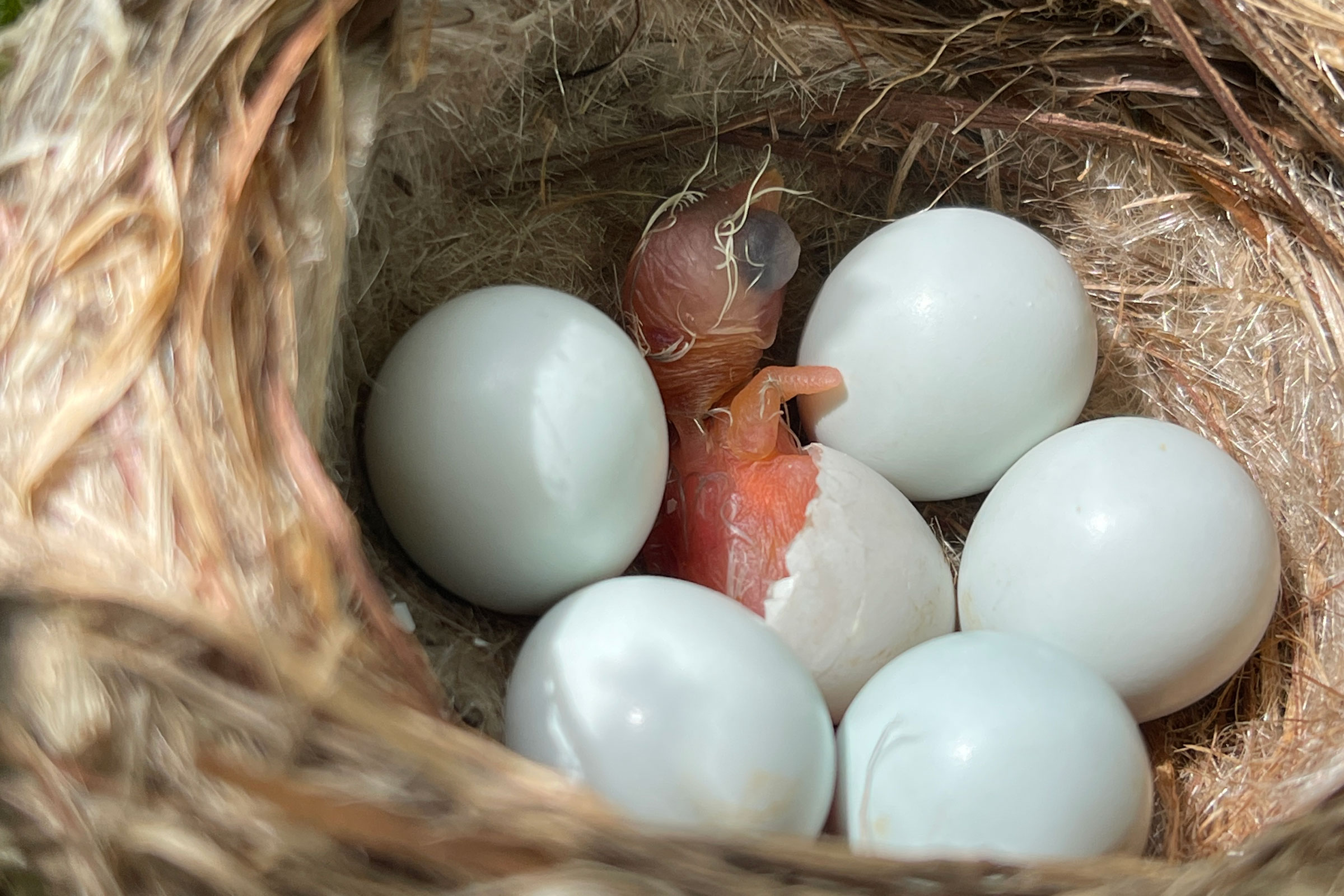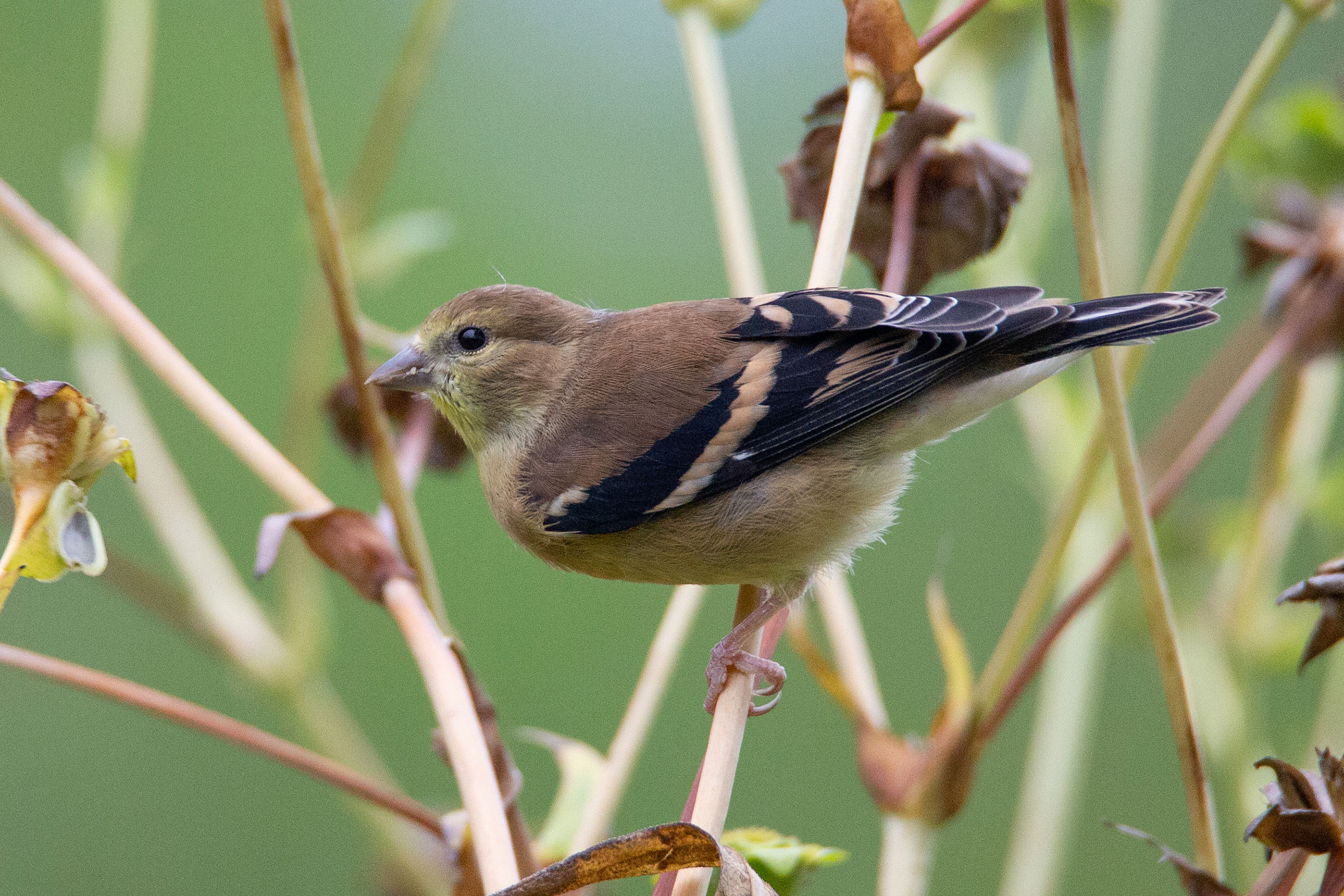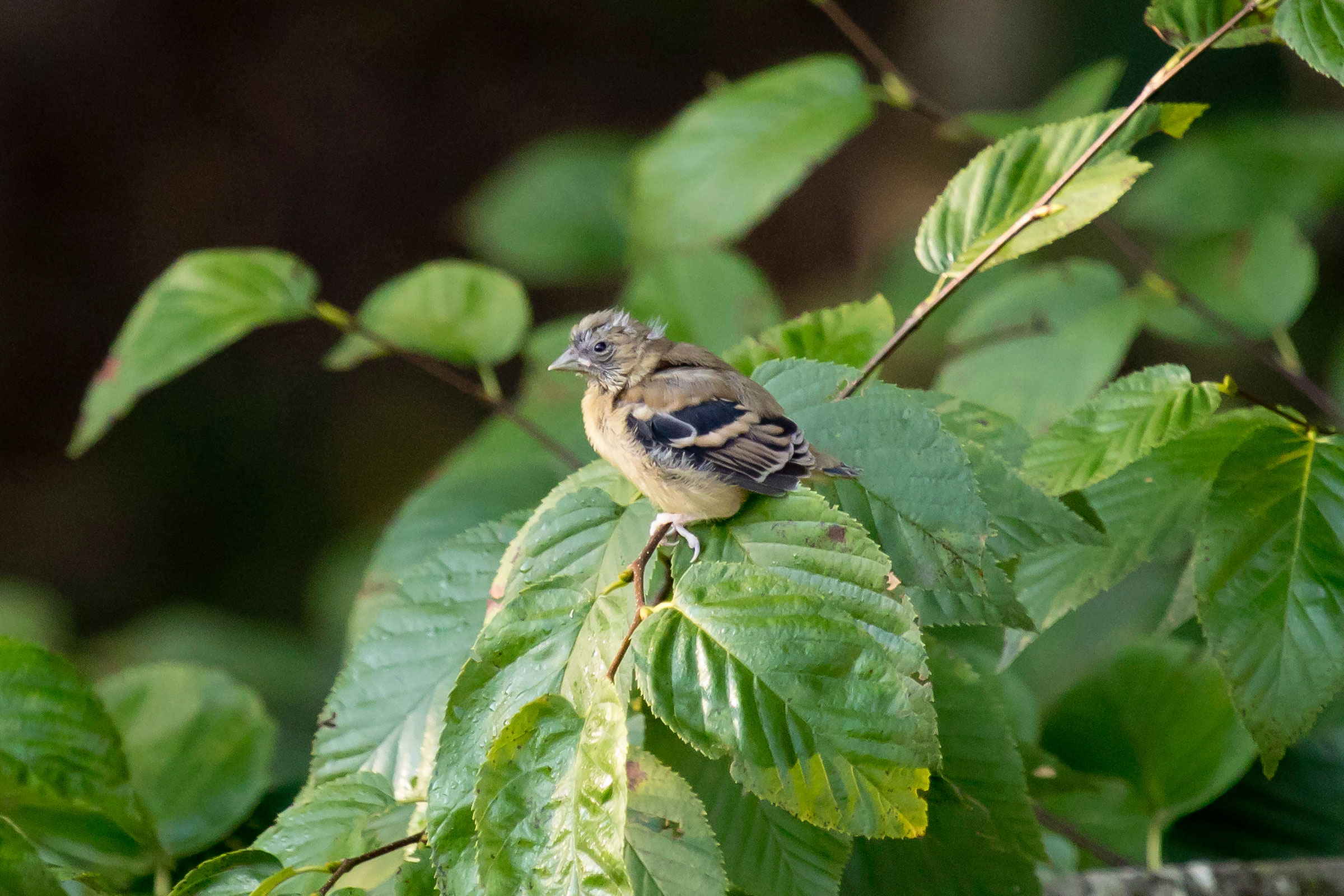Introduction
With its bright yellow body and boldly contrasting black wings, a male American Goldfinch in breeding plumage is perhaps the most striking bird to visit Virginia birdfeeders. In Virginia, this species is among the last birds to start breeding, timing it to the availability of plant materials that they use in nest-building and feeding their young (McGraw and Middleton 2020). They occupy a range of habitat types from forests and early successional areas to floodplains to gardens and other green spaces in urban habitats (Wilson 2014; McGraw and Middleton 2020).
Breeding Distribution
American Goldfinches occur throughout Virginia, with an almost uniformly high likelihood of occurring across regions and habitat types (Figure 1). They do have a slightly positive association with forest cover. The only blocks where American Goldfinches are slightly less likely to occur are those that contain salt marshes and other coastal habitats that are unsuitable for nesting American Goldfinches.
Due to model limitations, American Goldfinch distribution during the First Atlas and its change between the two Atlas periods could not be modeled (see Interpreting Species Accounts). For more information on its distribution during the First Atlas, please see the Breeding Evidence section.
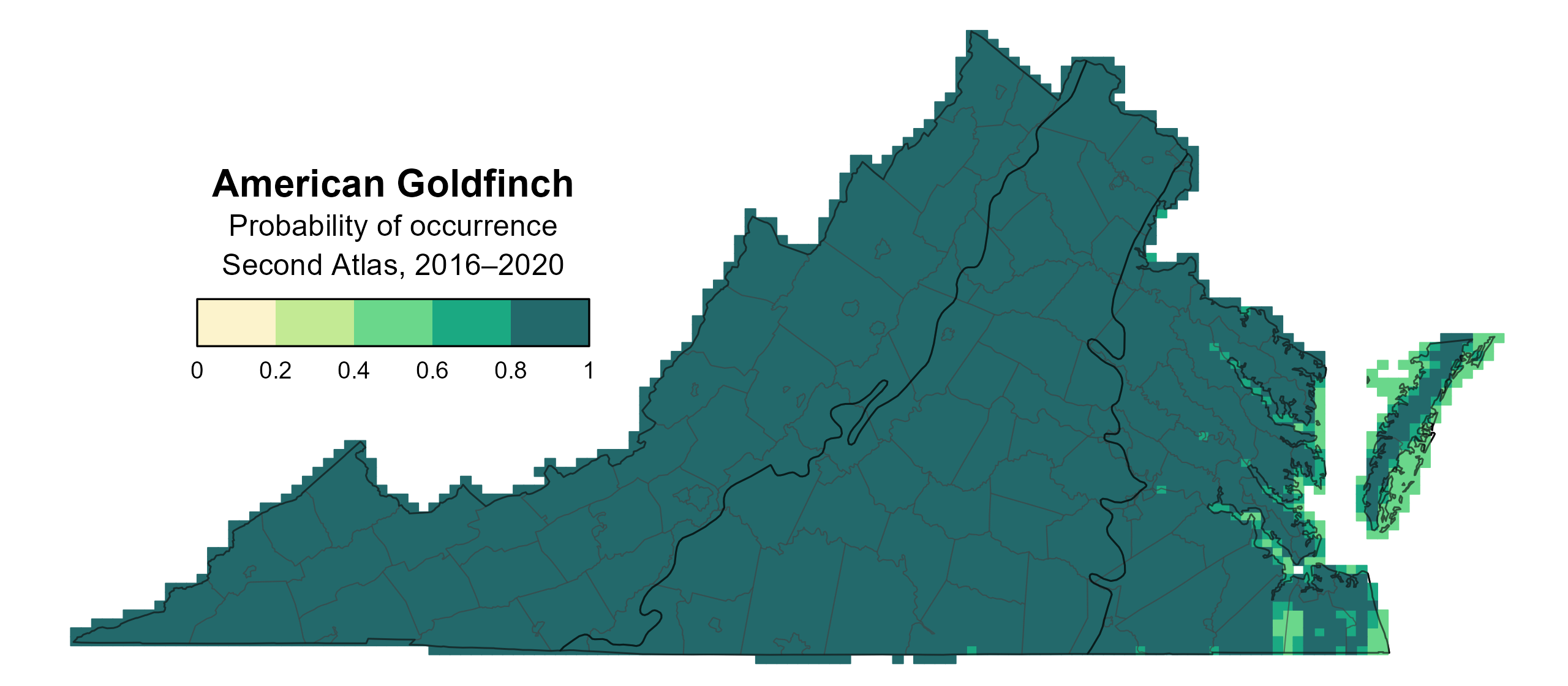
Figure 1: American Goldfinch breeding distribution based on probability of occurrence (Second Atlas, 2016–2020). This map indicates the probability that this species will occur in an Atlas block (an approximately 10 mi2 [26 km2] survey unit) based on environmental (including habitat) factors and after adjusting for the probability of detection (variation in survey effort among blocks).
Breeding Evidence
American Goldfinches were confirmed breeders in 246 blocks and 77 counties and found to be probable breeders in an additional 44 counties (Figure 2). Volunteers observed American Goldfinches breeding in all regions of the state during the First Atlas as well (Figure 3).
American Goldfinches were observed nest building as early as April 24. Breeding behaviors continued to be observed through November 28, when the latest observation of recently fledged young was recorded. Other frequently observed breeding behaviors included adults feeding young (June 23 – October 4) and adults carrying food (June 28 – September 16) (Figure 4).
For more general information on the breeding habits of this species, please refer to All About Birds.
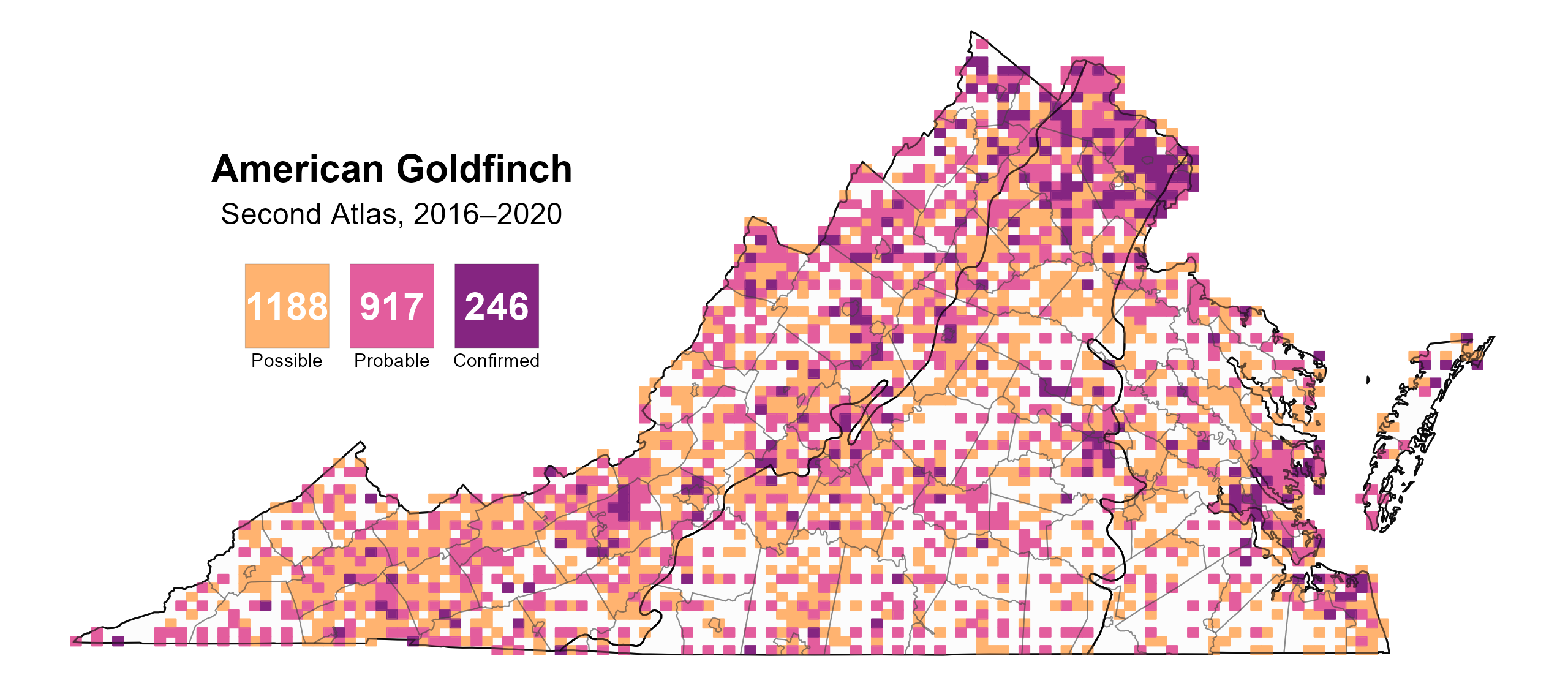
Figure 2: American Goldfinch breeding observations from the Second Atlas (2016–2020). The colored boxes illustrate Atlas blocks (approximately 10 mi2 [26 km2] survey units) where the species was detected. The colors show the highest breeding category recorded in a block. The numbers within the colors in the legend correspond to the number of blocks with that breeding evidence category.
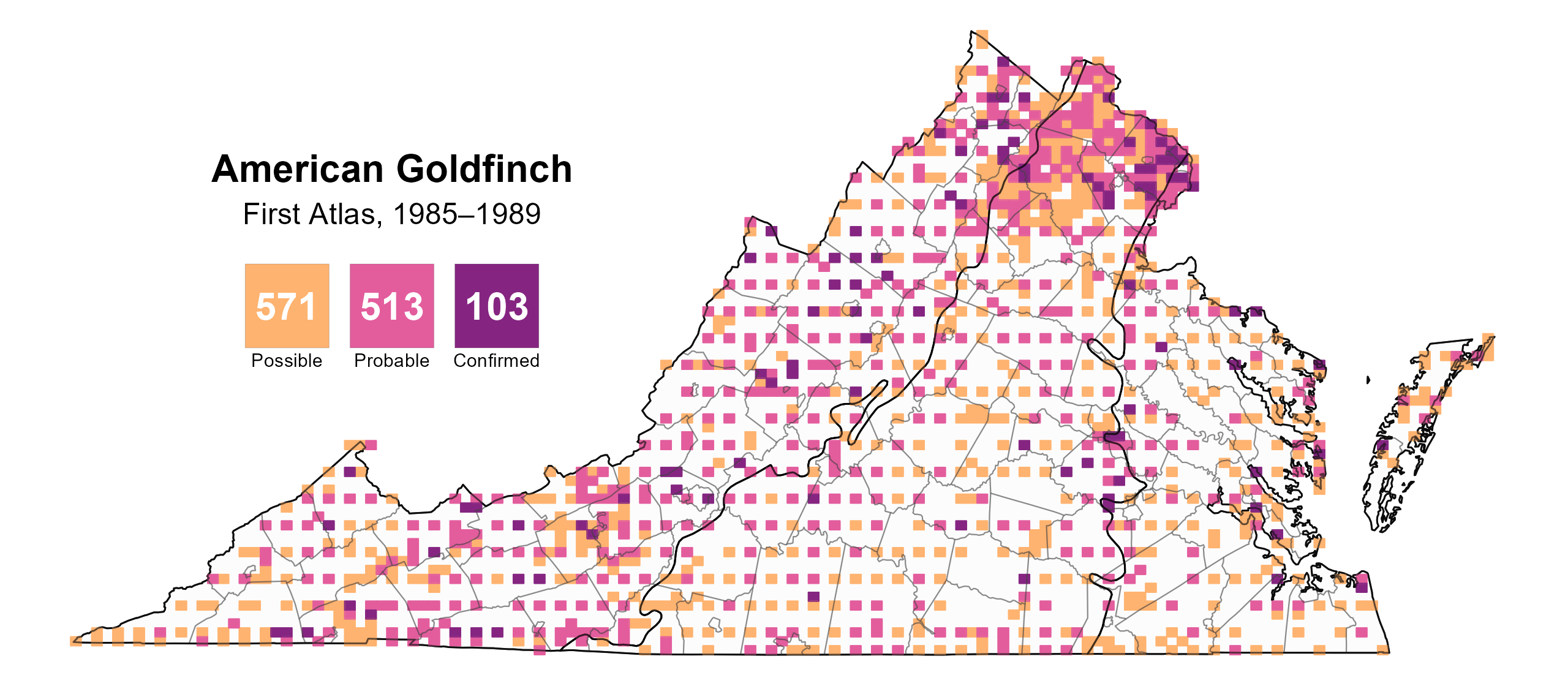
Figure 3: American Goldfinch breeding observations from the First Atlas (1985–1989). The colored boxes illustrate Atlas blocks (approximately 10 mi2 [26 km2] survey units) where the species was detected. The colors show the highest breeding category recorded in a block. The numbers within the colors in the legend correspond to the number of blocks with that breeding evidence category.
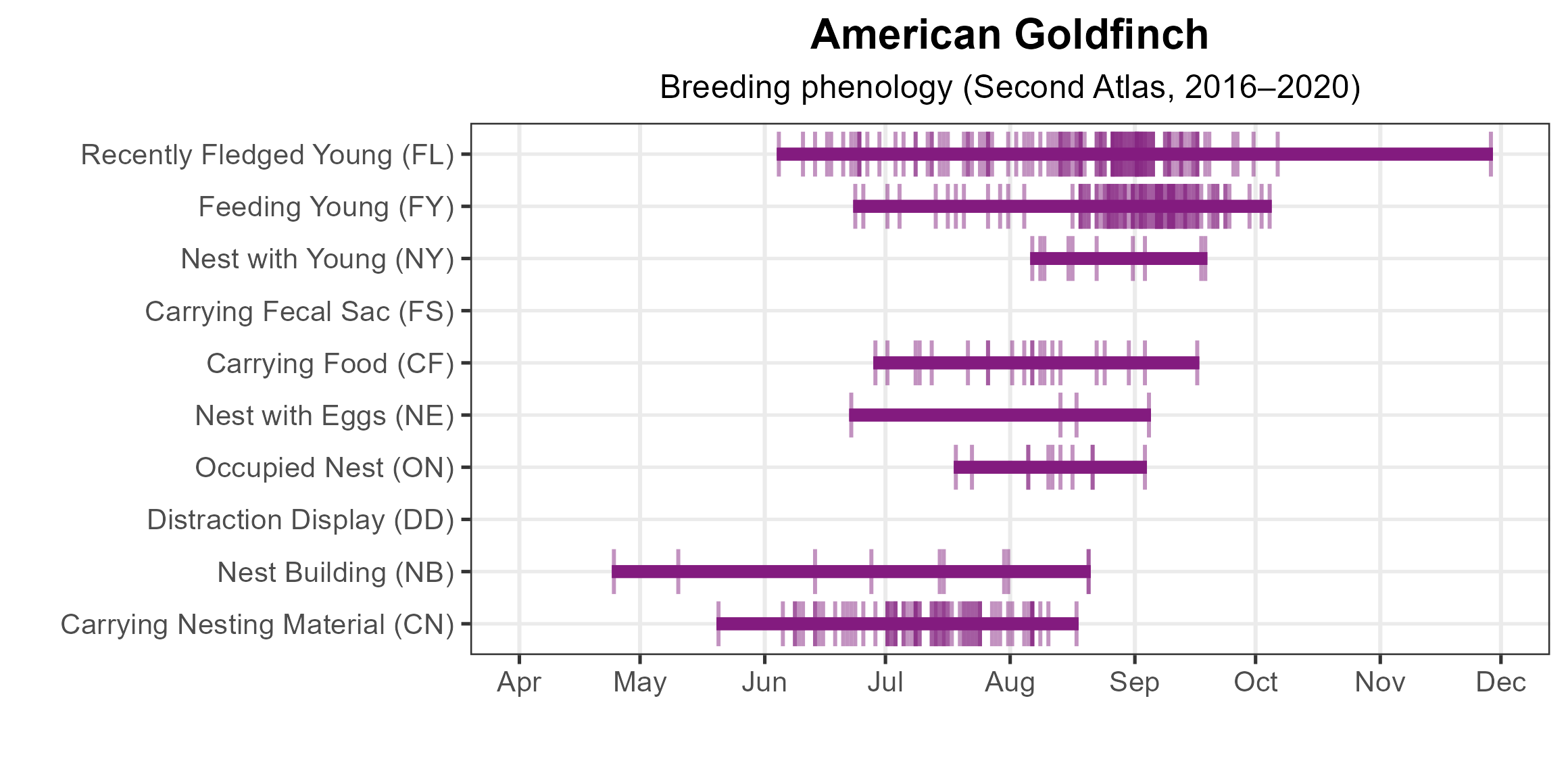
Figure 4: American Goldfinch phenology: confirmed breeding codes. This graph shows a timeline of confirmed breeding behaviors. Tick marks represent individual observations of the behavior.
Population Status
American Goldfinch relative abundance was estimated to be uniformly high across the state except in marginal habitats within the Coastal Plain region (Figure 5).
The total estimated American Goldfinch population in the state is approximately 2,212,000 individuals (with a range between 1,099,000 and 4,458,000). Given these population estimates, the American Goldfinch is the third most abundant bird in Virginia (among those species for which abundance could be modeled). Based on the North American Breeding Bird Survey (BBS) for Virginia, American Goldfinches were generally stable from 1961 to 2022, with a nonsignificant annual increase of 0.18% in its population. Similarly, between Atlas periods, it population increased by a nonsignificant 0.59% per year between 1988 and 2018 (Hostetler et al. 2023; Figure 6).

Figure 5: American Goldfinch relative abundance (Second Atlas, 2016–2020). This map indicates the predicted abundance of this species at a 0.4 mi2 (1 km2) scale based on environmental (including habitat) factors. Abundance values are presented on a relative scale of low to high.
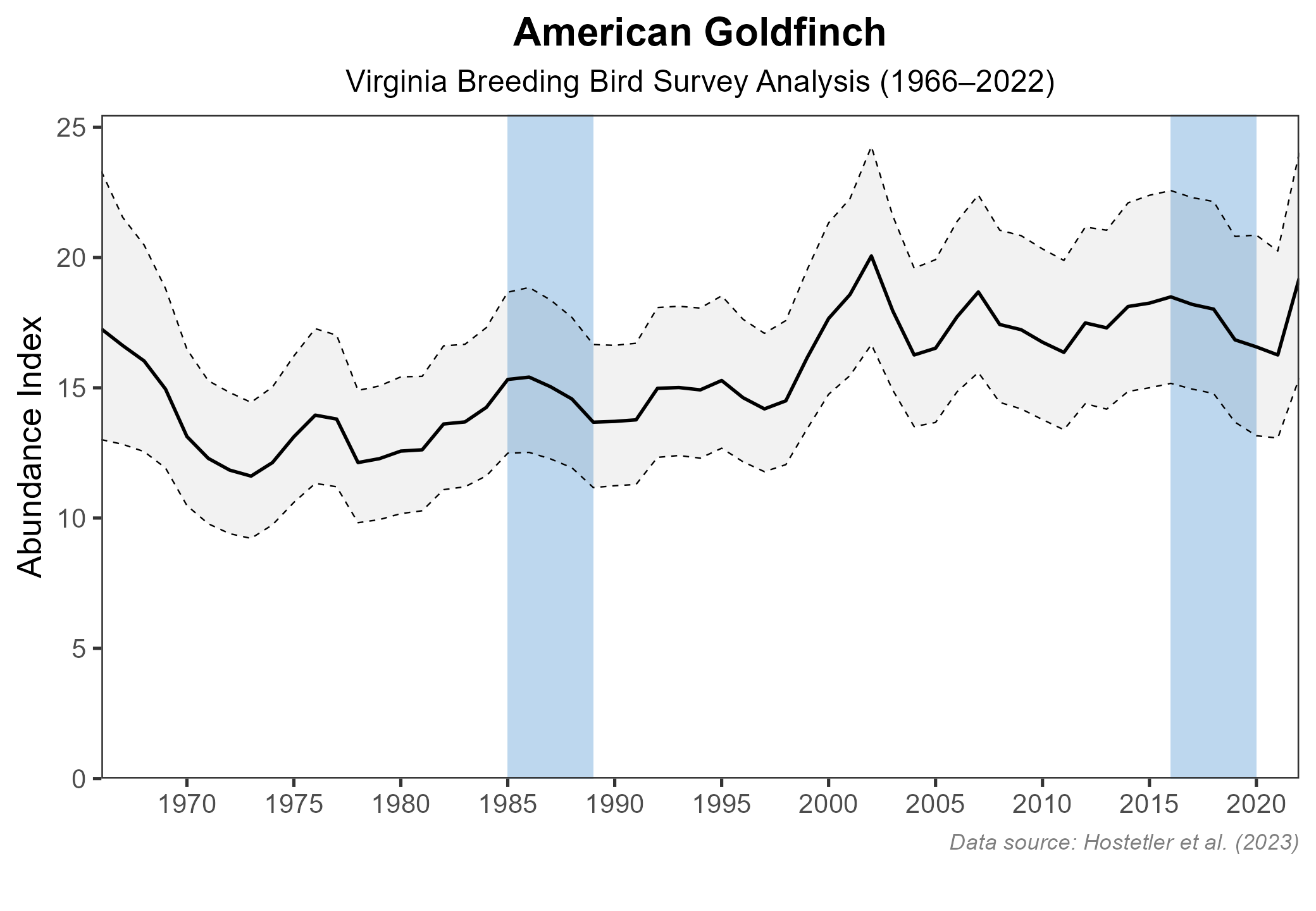
Figure 6: American Goldfinch population trend for Virginia as estimated by the North American Breeding Bird Survey. The vertical axis shows species abundance; the horizontal axis shows the year. The solid line indicates the estimated population trend; there is a 97.5% probability that the true population trend falls between the dashed lines. The shaded bars indicate the First and Second Atlas periods.
Conservation
Americans Goldfinches are relatively common and widespread throughout their range and in Virginia. They are not considered a species of special concern, and no specific conservation projects are underway in Virginia. However, conservation efforts targeted to species in similar forest and early successional habitats would also benefit American Goldfinches (McGraw and Middleton 2020).
Interactive Map
The interactive map contains up to six Atlas layers (probability of occurrence for the First and Second Atlases, change in probability of occurrence between Atlases, breeding evidence for the First and Second Atlases, and abundance for the Second Atlas) that can be viewed one at a time. To view an Atlas map layer, mouse over the layer box in the upper left. County lines and physiographic regional boundaries (Mountains and Valleys, Piedmont, and Coastal Plain) can be turned on and off by checking or unchecking the box below the layer box. Within the map window, users can hover on a block to see its value for each layer and pan and zoom to see roads, towns, and other features of interest that are visible beneath a selected layer.
View Interactive Map in Full Screen
References
Hostetler, J. A., J. R. Sauer, J. E. Hines, D. Ziolkowski, and M. Lutmerding (2023). The North American breeding bird survey, analysis results 1966–2022. U.S. Geological Survey, Laurel, MD, USA. https://doi.org/10.5066/P9SC7T11.
McGraw, K. J., and A. L. Middleton (2020). American Goldfinch (Spinus tristis), version 1.0. In Birds of the World (P. G. Rodewald, Editor). Cornell Lab of Ornithology, Ithaca, NY, USA. https://doi.org/10.2173/bow.amegfi.01.
Wilson, M. D. (2014). Avian Survey of Fort Lee, Virginia 2014. Center for Conservation Biology Technical Report Series, CCBTR-14-14. College of William and Mary and Virginia Commonwealth University. Williamsburg, VA, USA. 27 pp.



